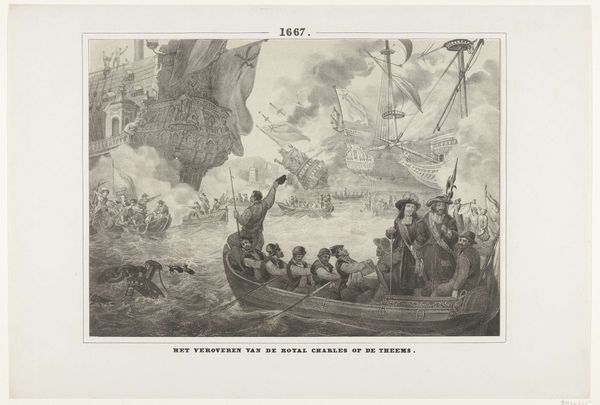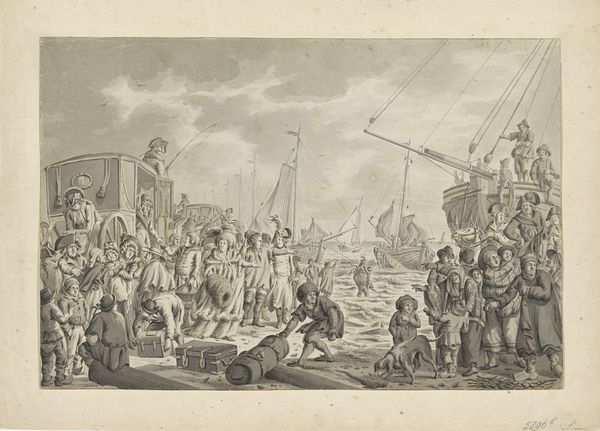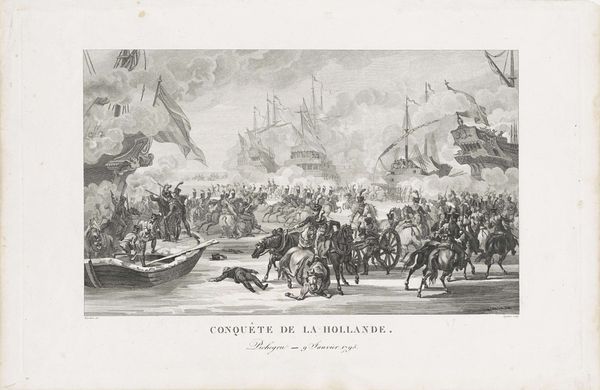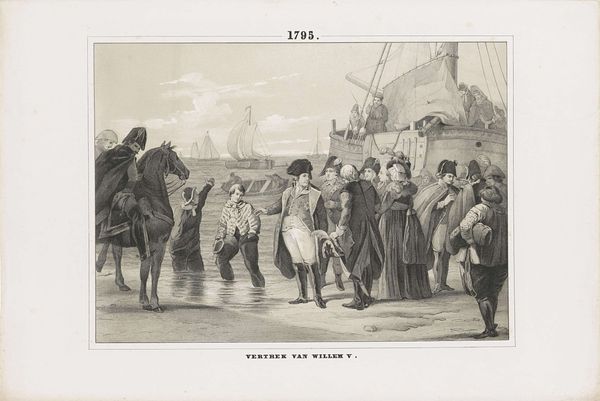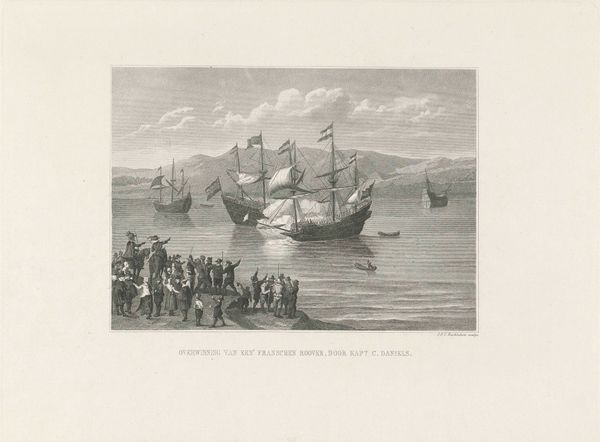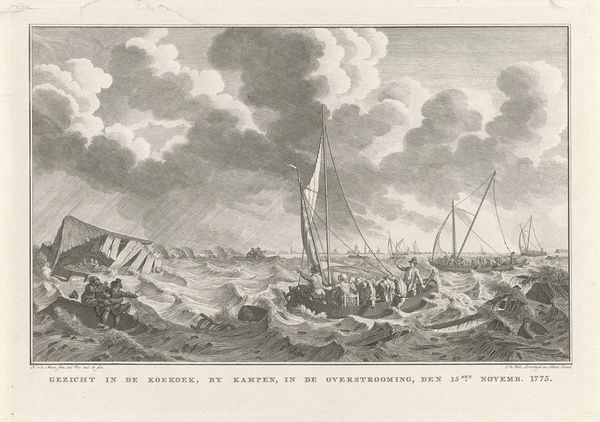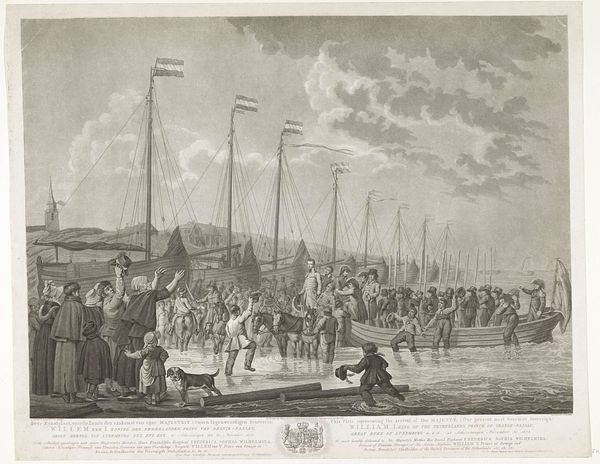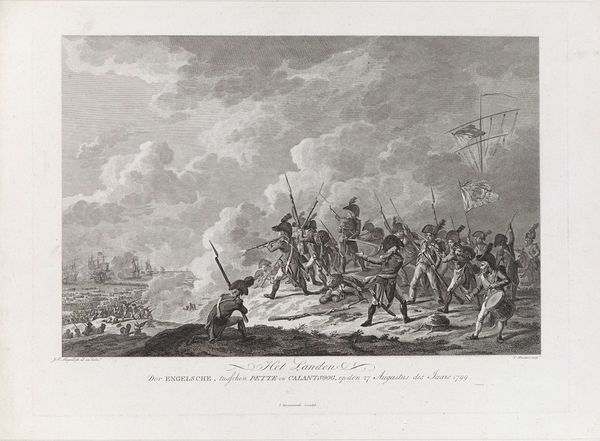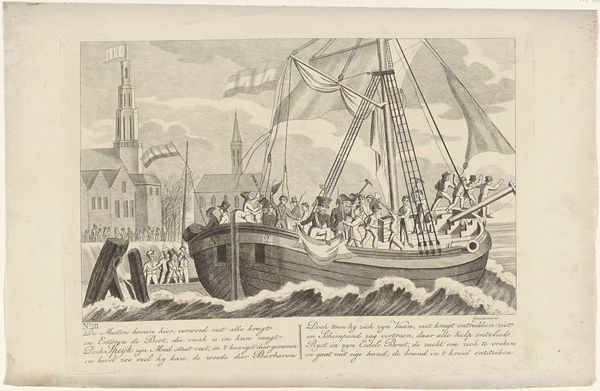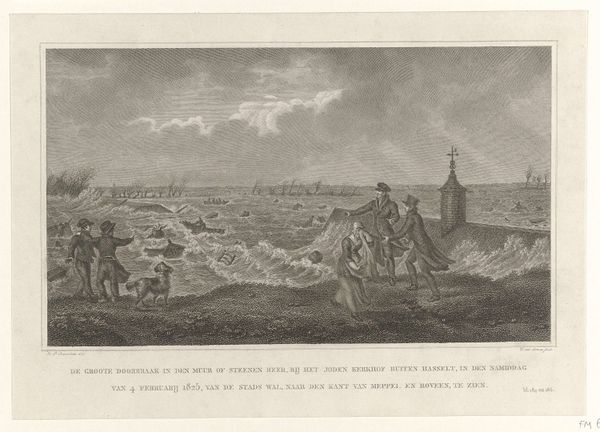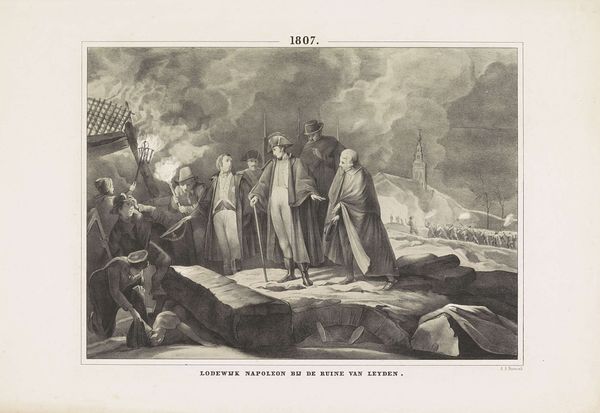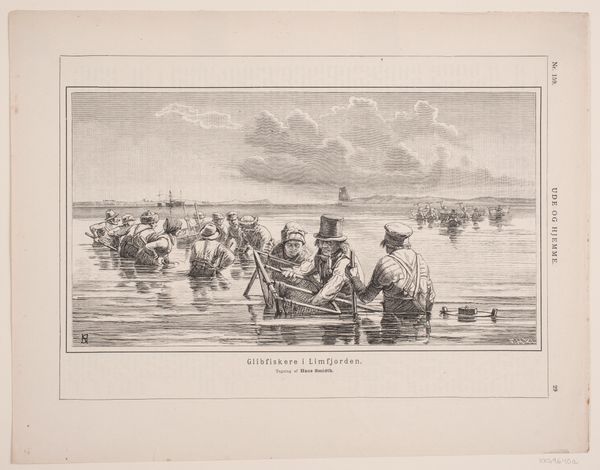
Dimensions: height 355 mm, width 530 mm
Copyright: Rijks Museum: Open Domain
Editor: This is "Aankomst van de prins van Oranje te Scheveningen, 1813," an engraving made sometime between 1853 and 1855. It's a rather muted scene, mostly sepia tones, but there’s something grand about the composition. What stands out to you about it? Curator: Initially, I'm struck by the interplay of lines and forms. Observe the dynamism inherent in the receding perspective, drawing the eye from the foreground boat toward the architectural forms in the distance. Consider, too, the distribution of light and shadow – how it articulates volume and depth within this predominantly monochromatic scheme. Editor: I hadn’t thought about the perspective like that. It’s interesting how the muted tones almost flatten the image despite the clear attempt to create depth. The people almost become part of the landscape itself. Curator: Precisely! Consider the role of the human figures not as narrative agents, but as structural elements within the composition. Do the figures advance any semiotic understanding to the arrangement, or is there further encoding to consider? Are they serving as a visual bridge between the water and the land? How does their placement affect the overall balance and rhythm of the scene? Editor: So, it's less about who they are and more about where they are, visually? The relationships between objects. It almost feels like the town and ship become characters in themselves as well. I never would have approached it that way! Curator: Precisely. This reading eschews simplistic narrative interpretation in favour of an appreciation for the artwork’s formal logic. We may come closer to any possible underlying purpose by reducing focus upon contextual interpretation. Editor: Thanks. It definitely gives me something new to think about when analyzing art.
Comments
No comments
Be the first to comment and join the conversation on the ultimate creative platform.
